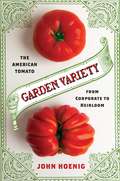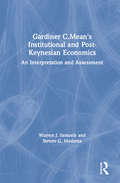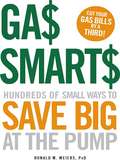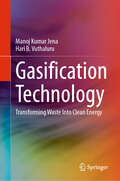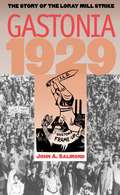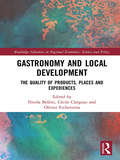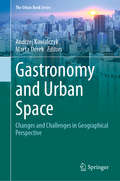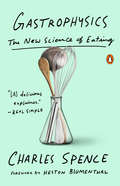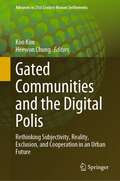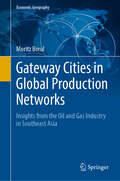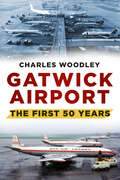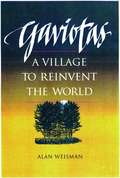- Table View
- List View
Garanti Payment Systems: Digital Transformation Strategy (A)
by Esel Cekin Shelle SantanaThe case opens with three questions that I l Akdemir Evlio lu, the executive vice president of marketing at Garanti Payment Systems (GPS), a subsidiary of Garanti Bank, is grappling with in January 2015. First, should GPS, create its own mobile app instead of capitalizing on the Bank's successful banking mobile app? Second, if a separate app was developed, then who should manage it? GPS managed the Bank's credit card business and was as a separate entity. But, the Bank's digital assets were managed exclusively by the Bank. Third, if a separate app was not developed, then how did the breadth and depth of functionality for the credit card customers need to be resolved? GPS employed nontraditional marketing techniques for managing the credit card business of the Bank. It was more of a loyalty program than a pure credit card business and had high focus on customer engagement and experience. GPS generated revenues from its customers (consumers and merchants) by managing installments and other features of credit cards. However, in 2013 and 2014, the banking watchdog of Turkey instituted a series of regulations on credit card providers to curb the prevailing consumer indebtedness in the country. As was the case for all Turkish retail banks and credit card businesses, GPS's profitability was hit severely. Evlio lu immediately shifted her focus to the idea of transferring GPS's campaign management to a mobile app and driving down costs. But, how best to do that was a critical question.
Garanti Payment Systems: Digital Transformation Strategy (A)
by Esel Cekin Shelle SantanaI l Akdemir Evlio lu, executive vice president of marketing at Garanti Payment Systems (GPS), a subsidiary of Garanti Bank, is grappling with three questions. First, should GPS create its own mobile app for credit card customers or leverage the bank's already successful mobile banking app? Second, if a separate app was developed, then who should manage it? GPS managed the bank's credit card business and was as a separate entity, but the bank's digital assets were managed exclusively by the bank. Third, if a separate app was not developed, then would the required breadth and depth of functionality for the credit card customers be delivered? If a separate app was not developed, then would GPS be able to design one when they had never done so before? The credit card business included a popular loyalty program and GPS leadership was very focused on customer engagement and experience for program enrollees, but how best to do that was a critical question.
Garbage In, Gospel Out? Controlling for the Underreporting of Remittances
by David A. Grigorian Tigran A. Melkonyan J. Scott ShonkwilerA report from the International Monetary Fund.
Garden City: Work, Rest, and the Art of Being Human.
by John Mark ComerWhat you do matters as much as who you are.What does it mean to be fully human?What does it look like to be fully alive?We&’ve all heard it said: It&’s who you are that matters, not what you do. Really? Where do the Scriptures teach that? After all, from the very first pages of the Bible, human beings were made to rule over and care for the earth. By calling and by commission, humanity was created to do good work. In these pages you'll learn that, ultimately, what you do matters just as much as who you are. Garden City will help you find answers to questions like,Does God care where I work?Does he have a clear direction for me?How can I create a rhythm for work and a practice of rest?This book isn&’t about how to get ahead in your career or spruce up your resume—it&’s about working, resting, and living a full existence.It&’s about spiritual life invading all of life.John Mark Comer is a New York Times bestselling author and the founder and teacher of Practicing the Way.
Garden Tourism
by Richard W BenfieldGarden visitation has been a tourism motivator for many years and can now be enjoyed in many different forms. Private garden visiting, historical garden tourism, urban gardens, and a myriad of festivals, shows and events all allow the green-fingered enthusiast to appreciate the natural world. This book traces the history of garden visitation and examines tourist motivations to visit gardens. Useful for garden managers and tourism students as well as casual readers, it also examines management and marketing of gardens for tourism purposes, before concluding with a detailed look at the form and tourism-based role of gardens in the future.
Garden Variety: The American Tomato from Corporate to Heirloom
by John HoenigChopped in salads, scooped up in salsa, slathered on pizza and pasta, squeezed onto burgers and fries, and filling aisles with roma, cherry, beefsteak, on-the-vine, and heirloom: where would American food, fast and slow, high and low, be without the tomato? The tomato represents the best and worst of American cuisine: though the plastic-looking corporate tomato is the hallmark of industrial agriculture, the tomato’s history also encompasses farmers’ markets and home gardens. Garden Variety illuminates American culinary culture from 1800 to the present, challenging a simple story of mass-produced homogeneity and demonstrating the persistence of diverse food cultures throughout modern America.John Hoenig explores the path by which, over the last two centuries, the tomato went from a rare seasonal crop to America’s favorite vegetable. He pays particular attention to the noncorporate tomato. During the twentieth century, as food production, processing, and distribution became increasingly centralized, the tomato remained king of the vegetable garden and, in recent years, has become the centerpiece of alternative food cultures. Reading seed catalogs, menus, and cookbooks, and following the efforts of cooks and housewives to find new ways to prepare and preserve tomatoes, Hoenig challenges the extent to which branding, advertising, and marketing dominated twentieth-century American life. He emphasizes the importance of tomatoes to numerous immigrant groups and their influence on the development of American food cultures. Garden Variety highlights the limits on corporations’ ability to shape what we eat, inviting us to rethink the history of our foodways and to take the opportunity to expand the palate of American cuisine.
Gardiner C.Mean's Institutional and Post-Keynesian Economics: An Interpretation and Assessment
by Steven G. Medema Warren J. SamuelsGardiner Means has a secure place in the history of 20th century economic thought, as the co-author with A.A.Berle of "The Modern Corporation and Private Property". But according to Samuels and Medema, Means should be remembered for major contributions in both micro- and macroeconomics. The authors discuss Means's ideas of administered pricing and profit maximization within the giant corporation, the possible links between industrial structure and macroeconomic performance, a theory of the firm as it relates to the market, and the micro foundations of macroeconomics. Central to Means's macroeconomics is his theory that administered pricing generates inflation and stagflation. Means, in the authors' view, was a seminal thinker and a post-Keynesian economist, as well as an institutionalist. This book also gives an precis of Means's unusual career in government and the academy.
Gary Player's Black Book: 60 Tips on Golf, Business, and Life from the Black Knight
by Lee Trevino Gary PlayerGary Player's Black Book contains fifty questions and detailed responses from eighteen-time major winner Gary Player. The book, divided into three parts, focuses on specific scenarios and problems that arise in golf, life, and business.In the first section on golf, topics include putting, scoring, etiquette, the mental side of the game, and fitness and nutrition. In the section on life, Player, the father of six and grandfather to twenty-two, addresses issues such as parenting, who to turn to when in need of advice, and more. Finally, in the section on business, he details how to deal with competition, among other topics. Player responds to questions such as: Golf: How do I play a bunker shot from a plugged lie? Life: I feel like I’ve lost the passion for what I do. How do I get that back? Business: When people criticize my work I take it very personally. How do you handle criticism?The 2012 recipient of the PGA Tour Lifetime Achievement Award, Player draws from both on and off the course experiences dealing with competitors, businesspeople, and family. In doing so, he offers a unique glimpse into handling adversity with regard to these relationships. The advice that he offers is invaluable to fans of all ages.
Gary Rodkin at Pepsi-Cola North America (A)
by Ayesha Kanji David A. Thomas Gina M. CarioggiaAfter assuming the position of CEO of Pepsi-Cola North America (PCNA), Gary Rodkin faces organizational problems within PCNA and external friction between PCNA and its largest bottler, the Pepsi Bottling Group. In addition to the challenge of organizational alignment, this case also provides an opportunity to examine effective leadership, reorganization, and brand management in the context of the beverage industry.
Gary Vaynerchuk: #GaryVee
by Laura Huang Sarah MehtaFresh out of a public social media debacle, Gary Vaynerchuk needs to reconsider the approach he takes in leading his digital media agency, VaynerMedia. Founded in 2009 by Gary and his brother AJ, VaynerMedia has grown into an unconventional creative marketing agency. With notable clients and a savvy and personable approach to maintaining attention arbitrage, the future looks bright with Gary at the helm of VaynerMedia. Or does it? This case explores Vaynerchuk's strengths and weaknesses, VaynerMedia's successes and challenges, and the overall command of the marketing firm as it continues to grow and evolve in an ever-changing digital media landscape. Ultimately, the case highlights a tension many ventures face as they mature from initial founding to growth sustainability: should the visionary CEO continue leading the charge forward, or should he consider stepping aside and allowing his firm to lead its own way forward?
Gas Smarts
by Ronald M. WeiersDo you get that sinking feeling that you are wasting cash whenever you're driving?Are you sick of gasoline prices increasing whenever gasoline companies feel like it?Are you becoming increasingly aware of how your car's gas usage is negatively impacting the environment? If you answered "yes" to any of these questions, this is the right book to crown you the king of your own road to savings. Author Ron Weiers's priceless advice guarantees to save you money in all facets of your driving. Whether you're behind the wheel, planning your next trip, researching a new vehicle, or considering adding aftermarket accessories to your car, this book has the information you need to drive efficiently, safely, and as inexpensively as possible.
Gas Smarts: Hundreds of Small Ways to Save Big Time at the Pump
by Ronald WeiersDo you get that sinking feeling that you are wasting cash whenever you're driving?Are you sick of gasoline prices increasing whenever gasoline companies feel like it?Are you becoming increasingly aware of how your car's gas usage is negatively impacting the environment?If you answered "yes" to any of these questions, this is the right book to crown you the king of your own road to savings. Author Ron Weiers's priceless advice guarantees to save you money in all facets of your driving. Whether you're behind the wheel, planning your next trip, researching a new vehicle, or considering adding aftermarket accessories to your car, this book has the information you need to drive efficiently, safely, and as inexpensively as possible.
Gasification Technology: Transforming Waste Into Clean Energy
by Hari B. Vuthaluru Manoj Kumar JenaThis book examines the growing interest in gasification technology, which has become the primary route for effectively utilizing solid carbonaceous material for energy generation and syngas production. The thermochemical conversion of solids, including pyrolysis, combustion, and gasification, has become a primary method for extracting energy and value-added chemicals. However, gasification technology is the most efficient and economical way to utilize solid fuel. Understanding the gasification process and its diversified applications is essential for making gasification technology sustainable in the future. This book provides readers with an in-depth understanding of gasification technology, covering its past use, present scenario, and future outlook. Specifically, in an emerging world with the rapid advancement of science and technology, this book offers knowledge on the fundamentals, applications, and sustainable advancement of gasification technology covering a wide range of solid fuels. Gasification Technology: Transforming Waste Into Clean Energy provides early career researchers, engineers, and research and development scientists with a solid knowledge base on the fundamentals, industrial applications, and commercialization of gasification. The first book to cover all aspects of gasification technology; Examines the role and importance of gasification technology and the rise in global energy demand; Integrates insights into engineering applications and the advancement of gasification as a sustainable technology.
Gaston Acurio: A Recipe for Success
by Anat Keinan Cintra Scott Michael I. Norton German EchecoparGaston Acurio, star chef and restaurateur from Peru, must decide whether and how to adapt his signature Peruvian cuisine to local tastes as he opens restaurants in new countries.
Gastonia 1929
by John A. SalmondOf the wave of labor strikes that swept through the South in 1929, the one at the Loray Mill in Gastonia, North Carolina, is perhaps the best remembered. In Gastonia 1929 John Salmond provides the first detailed account of the complex events surrounding the strike at the largest textile mill in the Southeast. His compelling narrative unravels the confusing story of the shooting of the town's police chief, the trials of the alleged killers, the unsolved murder of striker Ella May Wiggins, and the strike leaders' conviction and subsequent flight to the Soviet Union. Describing the intensifying climate of violence in the region, Salmond presents the strike within the context of the southern vigilante tradition and as an important chapter in American economic and labor history in the years after World War I. He draws particular attention to the crucial role played by women as both supporters and leaders of the strike, and he highlights the importance of race and class issues in the unfolding of events.
Gastronomy and Local Development: The Quality of Products, Places and Experiences (Routledge Advances in Regional Economics, Science and Policy)
by Nicola Bellini Cécile Clergeau Olivier EtcheverriaGastronomy, particularly gourmet tourism, is widely acknowledged as having a powerful impact on local development. Public policies have developed in response to research, highlighting gastronomy as key in a successful tourism economy. However, research thus far has not fully explored the underlying mechanisms of gastronomic tourism, in particular the marketing and perception of quality, on economic development. This book considers how the quality of products, places, and experiences contributes to the desirability and competitiveness of gourmet touristic destinations. The contributors present theoretical and empirical studies to create an original conceptual framework for regional development based on the quality of products, of places, and of touristic experience. It also examines the ways in which quality is linked to identity, diversity, innovation, and creativity. With an interdisciplinary approach, this book will be of interest to researchers in tourism and hospitality, regional studies, and human geography, as well as to tourism development professionals and policymakers in the areas of rural and local development.
Gastronomy and Urban Space: Changes and Challenges in Geographical Perspective (The Urban Book Series)
by Andrzej Kowalczyk Marta DerekThis book focuses on the relationship between gastronomy and urban space. It highlights the intrinsic role of eating establishments and the gastronomy industry for cities by assessing their huge impacts on urban changes and discussing some of the challenges posed by new developments.Written by authors with a background in geography, it starts by discussing theoretical aspects of studies on gastronomy in urban space to place the subject in the broader context of urban geography. Covering both changes and challenges in gastronomy in urban space, it presents a wide range of problems, which are described and analysed using various case studies from Europe and other parts of the world.
Gastrophysics: The New Science of Eating
by Charles SpenceThe science behind a good meal: all the sounds, sights, and tastes that make us like what we're eating—and want to eat more.Why do we consume 35 percent more food when eating with one other person, and 75 percent more when dining with three? How do we explain the fact that people who like strong coffee drink more of it under bright lighting? And why does green ketchup just not work? The answer is gastrophysics, the new area of sensory science pioneered by Oxford professor Charles Spence. Now he's stepping out of his lab to lift the lid on the entire eating experience—how the taste, the aroma, and our overall enjoyment of food are influenced by all of our senses, as well as by our mood and expectations. The pleasures of food lie mostly in the mind, not in the mouth. Get that straight and you can start to understand what really makes food enjoyable, stimulating, and, most important, memorable. Spence reveals in amusing detail the importance of all the “off the plate” elements of a meal: the weight of cutlery, the color of the plate, the background music, and much more. Whether we’re dining alone or at a dinner party, on a plane or in front of the TV, he reveals how to understand what we’re tasting and influence what others experience. This is accessible science at its best, fascinating to anyone in possession of an appetite. Crammed with discoveries about our everyday sensory lives, Gastrophysics is a book guaranteed to make you look at your plate in a whole new way.
Gated Communities and the Digital Polis: Rethinking Subjectivity, Reality, Exclusion, and Cooperation in an Urban Future (Advances in 21st Century Human Settlements)
by Kon Kim Heewon ChungThis edited collection provides an alternative discourse on cities evolving with physically and virtually networked communities—the ‘digital polis’—and offers a variety of perspectives from the humanities, media studies, geography, architecture, and urban studies. As an emergent concept that encompasses research and practice, the digital polis is oriented toward a counter-mapping of the digital cityscape beyond policing and gatekeeping in physical and virtual gated communities. Considering the digital polis as offering potential for active support of socially just and politically inclusive urban circumstances in ways that mirror the Greek polis, our attention is drawn towards the interweaving of the development of digital technology, urban space, and social dynamics. The four parts of this book address the formation of technosocial subjectivity, real-and-virtual combined urbanity, the spatial dimensions of digital exclusion and inclusion, and the prospect of emancipatory and empowering digital citizens. Individual chapters cover varied topics on digital feminism, data activism, networked individualism, digital commons, real-virtual communalism, the post-family imagination, digital fortress cities, rights to the smart city, online foodscapes, and open-source urbanism across the globe. Contributors explore the following questions: what developments can be found over recent decades in both physical and virtual communities such as cyberspace, and what will our urban future be like? What is the ‘digital polis’ and what kinds of new subjectivity does it produce? How does digital technology, as well as its virtuality, reshape the city and our spatial awareness of it? What kinds of exclusion and cooperation are at work in communities and spaces in the digital age? Each chapter responds to these questions in its own way, navigating readers through routes toward the digital polis.Chapter "Introduction - The digital polis and its practices: Beyond gated communities" is available open access under a Creative Commons Attribution 4.0 International License via link.springer.com.
Gateway Cities in Global Production Networks: Insights from the Oil and Gas Industry in Southeast Asia (Economic Geography)
by Moritz BreulThis book provides a comprehensive analysis of the role of gateway cities in contemporary circuits of global production. Apart from facilitating the interlinking of economic activities in the surrounding regions with the global economy, gateway cities have enormous implications for how certain regions participate in the global economy. Based on a case study of the oil and gas industry in Southeast Asia the book maps gateway cities, explores why these cities have come to occupy a gateway role, and evaluates their implications for regional economic development. To this aim, the book links components from research on the World City Network with Global Production Network research and demonstrates how this intersection creates synergies for studying the role of cities in economic globalization. The main audiences that this book appeals to are researchers and students interested in debates on regional development and the role of cities in the global economy. The book is also attractive to scholars interested in the organization of extractive industries.
Gateway: Moving Beyond the Box
by Youngme Moon Frances X. Frei Hanna Rodriguez-FarrarGateway has opened retail stores to differentiate itself from its competitors (e.g., Dell). Describes how the company has created an excellent service experience, but has struggled financially as a result.
Gatwick Airport: The First 50 Years
by Charles WoodleyThe Gatwick story really began when two young men purchased a plot of land near Gatwick Racecourse to develop as a flying field. From these humble beginnings in the 1930s, it has become Britain’s second airport, with 34 million passengers a year passing through the terminals – and this despite it having only a single runway! This lavishly illustrated volume traces its extraordinary early history, including its varied and valuable wartime service under the auspices of the RAF, its subsequent redevelopment in the 1950s and its emergence in the 1960s and beyond – after considerable struggles – as the bustling, modern airport familiar to so many travellers today. It is an unashamedly nostalgic look at this historic airport, its hardworking staff and the iconic planes that have passed through it.
Gavi and COVID-19: Pandemic of the Century
by Sid Misra Ashish KhannaGavi has helped immunize over 760 million children in the world's poorest countries over the past 20 years saving 13 million lives. How should Gavi respond to the need for a vaccine for the worldwide COVID-19 pandemic?
Gavi and COVID-19: Pandemic of the Century
by Tarun Khanna Sid MisraGavi has helped immunize over 760 million children in the world's poorest countries over the past 20 years saving 13 million lives. How should Gavi respond to the need for a vaccine for the worldwide COVID-19 pandemic?
Gaviotas: A Village to Reinvent the World
by Alan WeismanThe story of Gaviotas, a village in a remote area of Colombia once thought uninhabitable, and the simple, affordable technology that was developed there and is now in use throughout Colombia.



